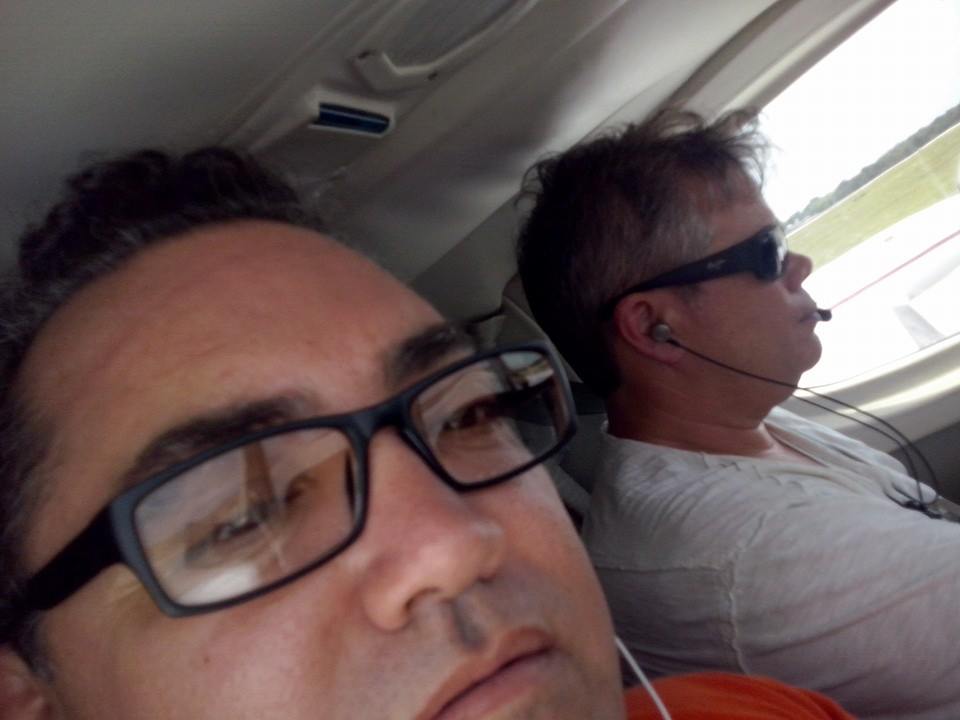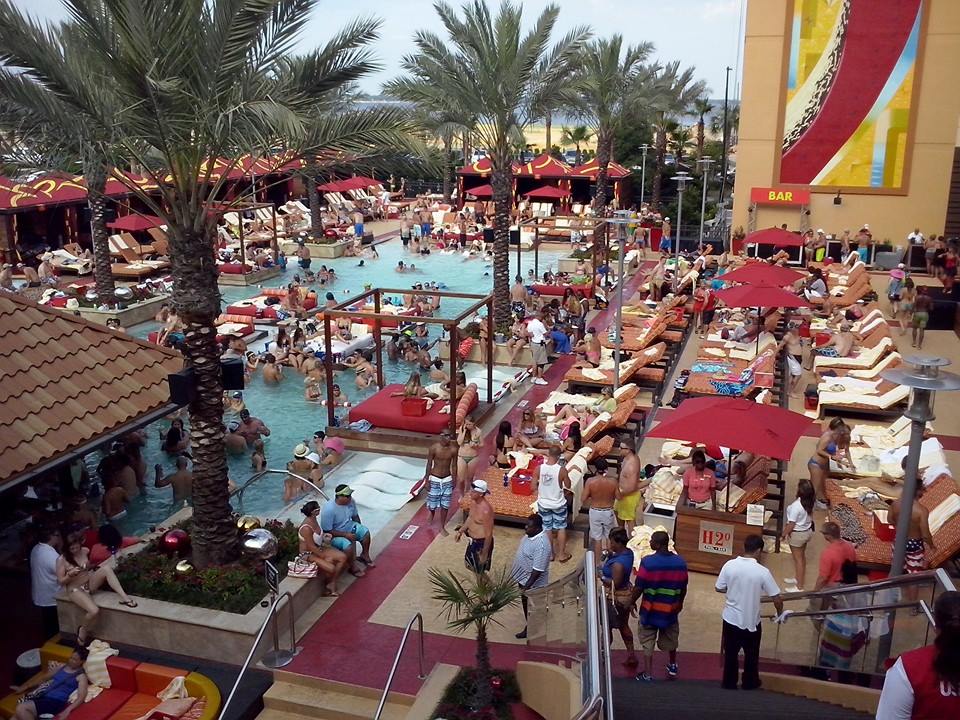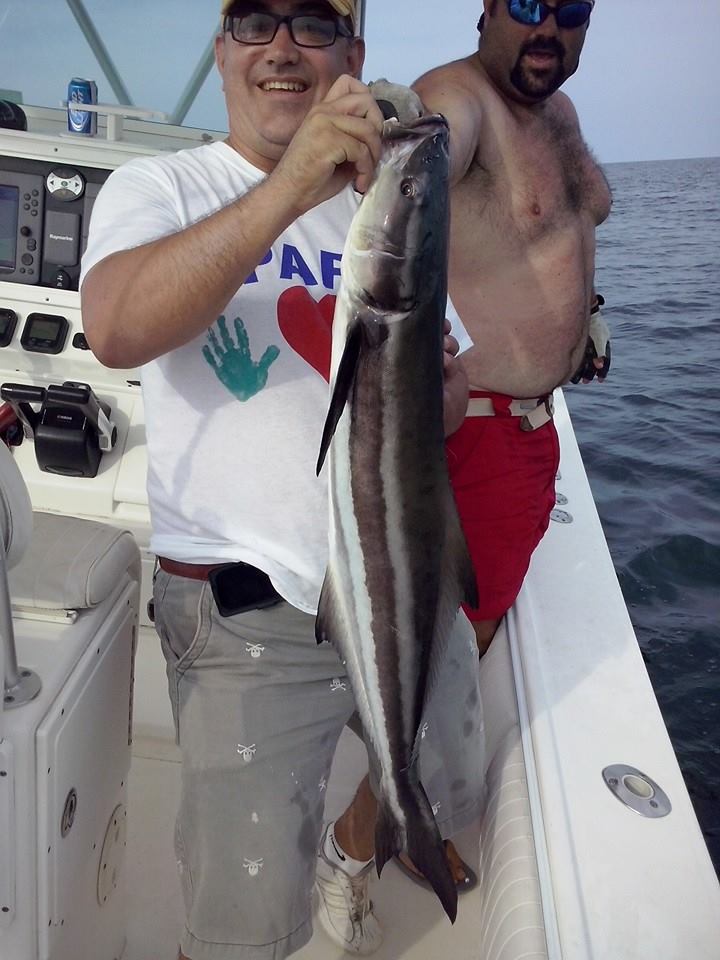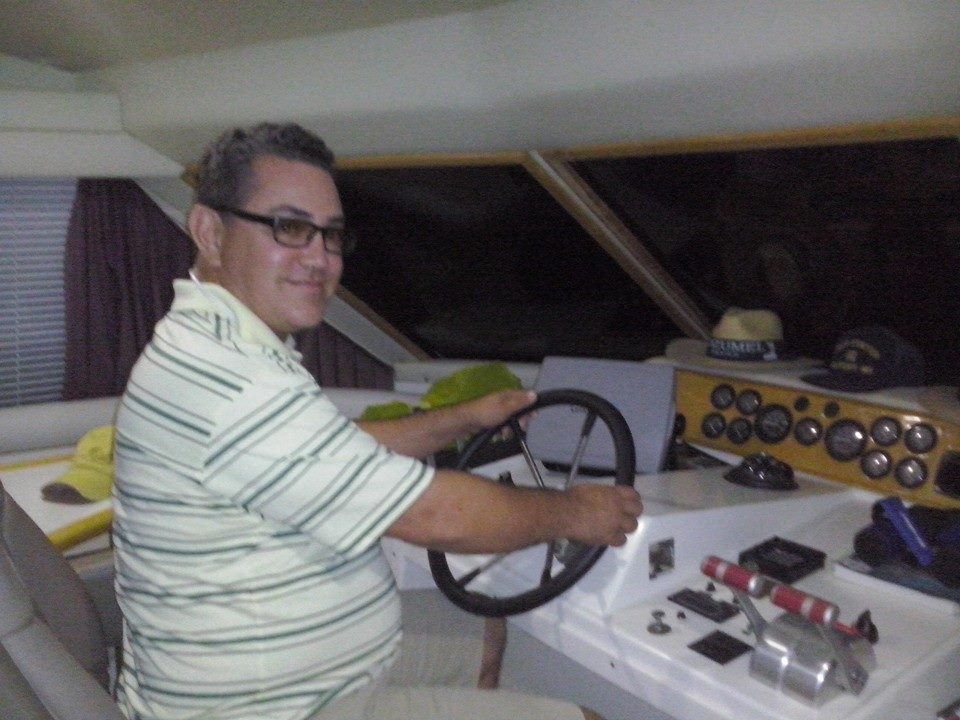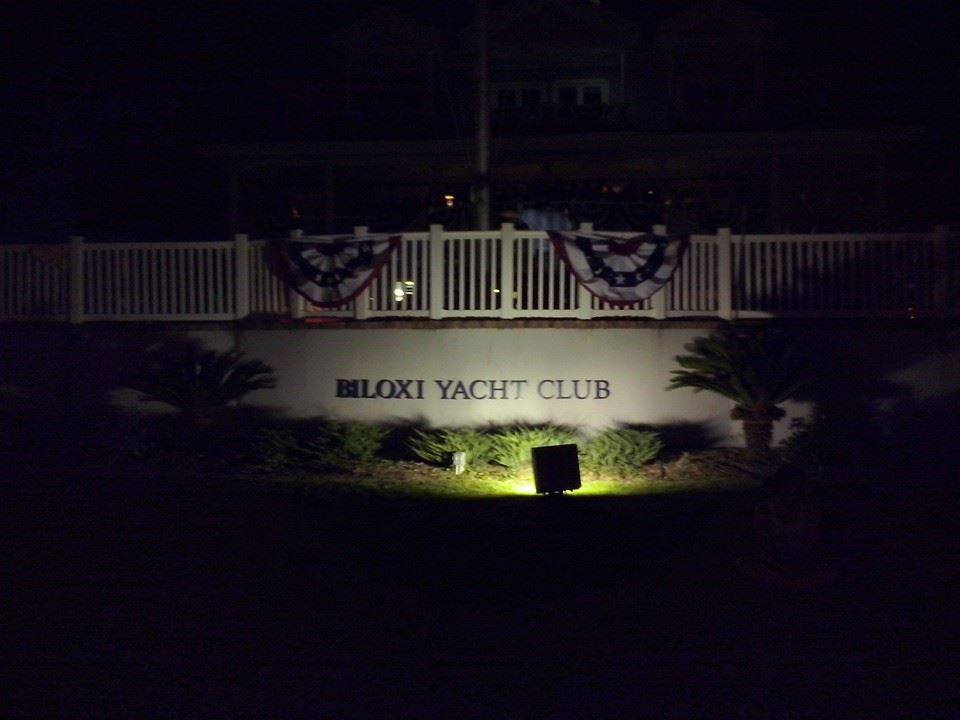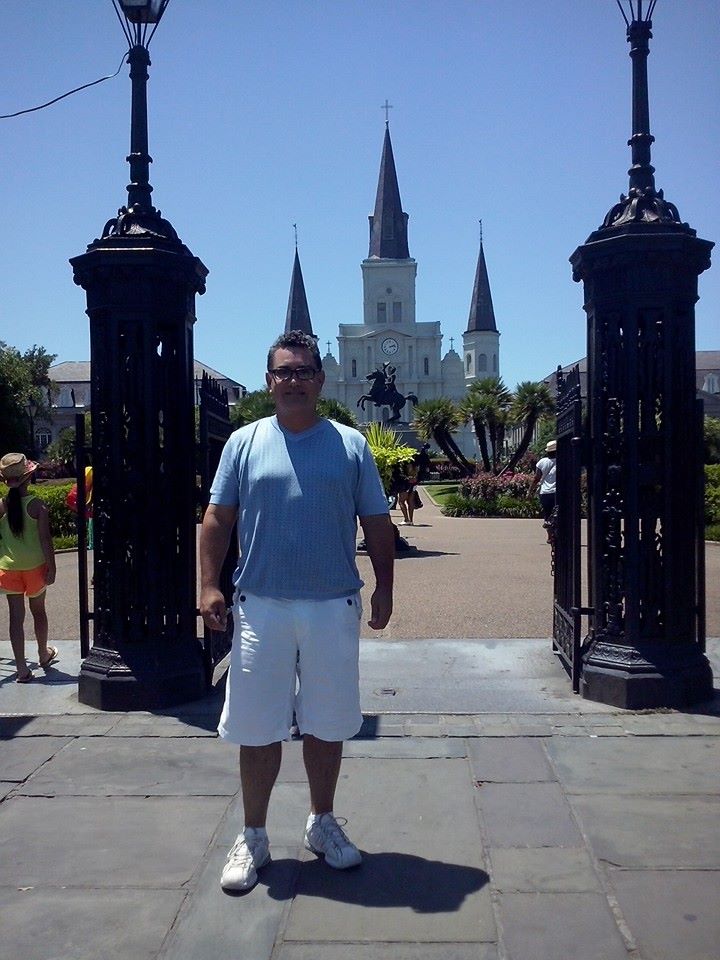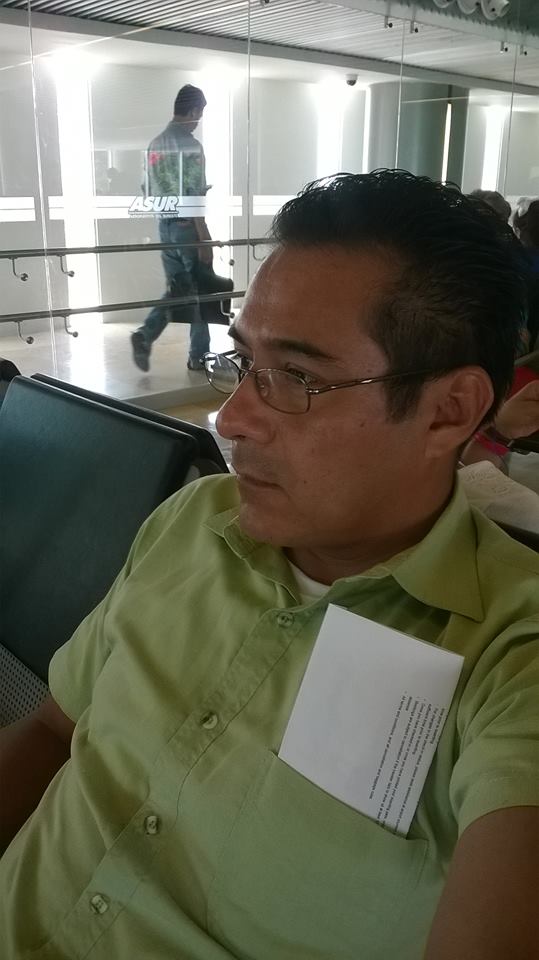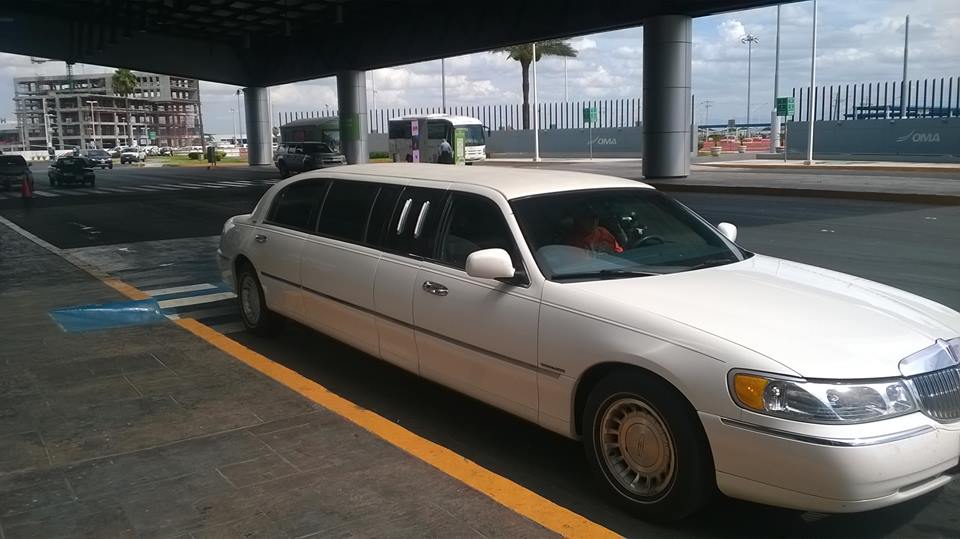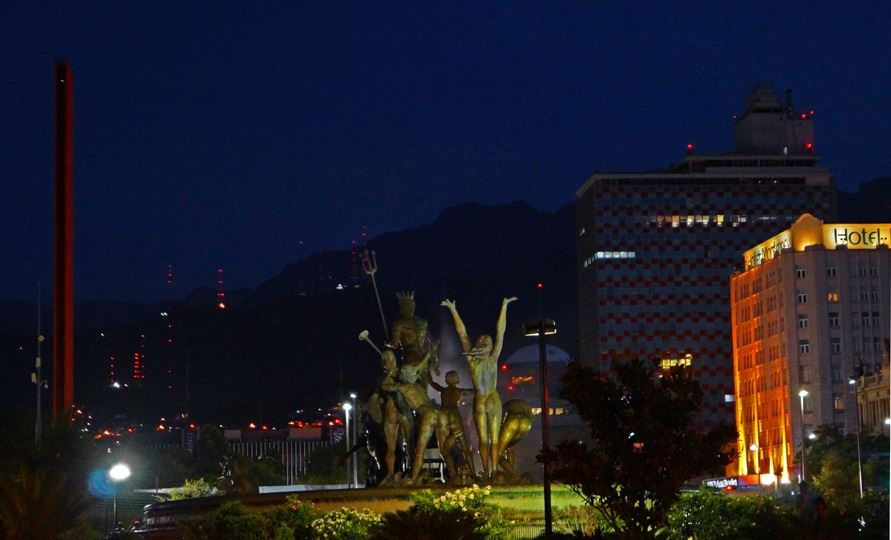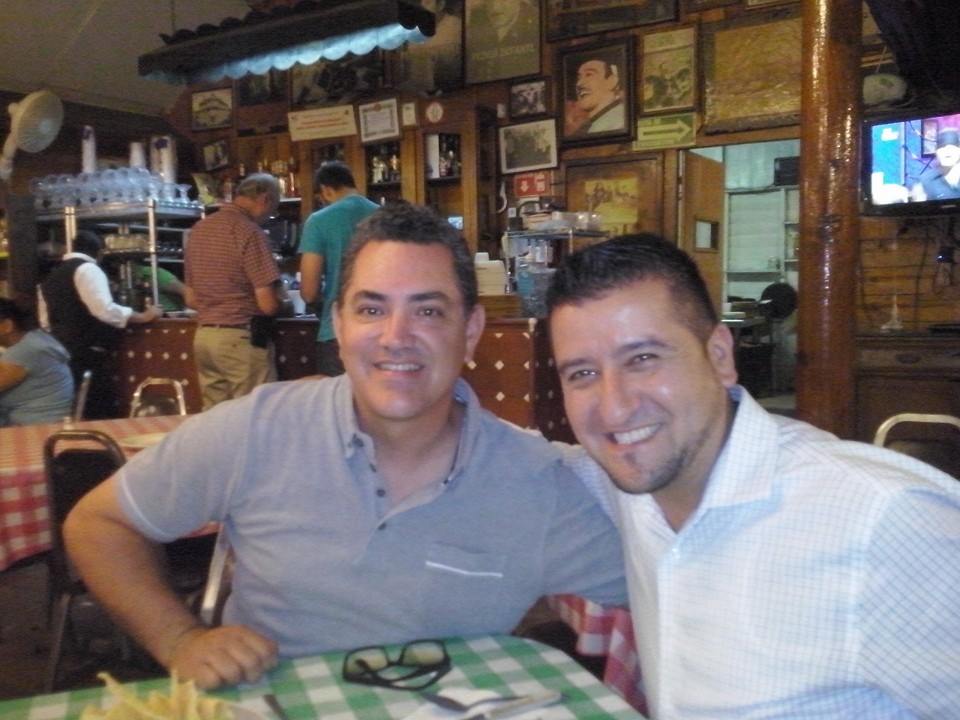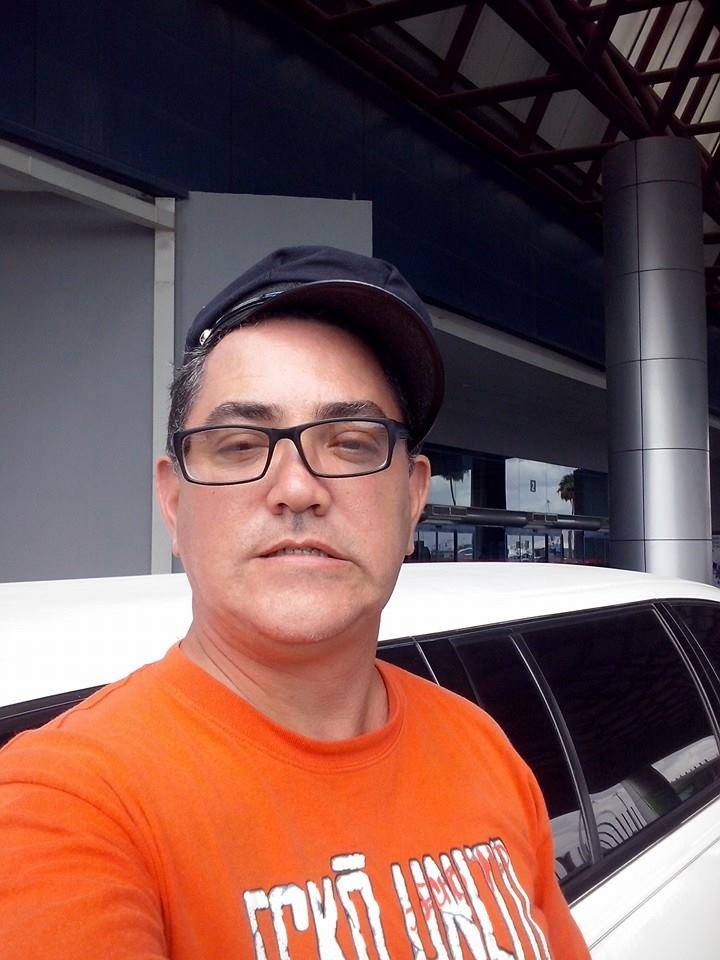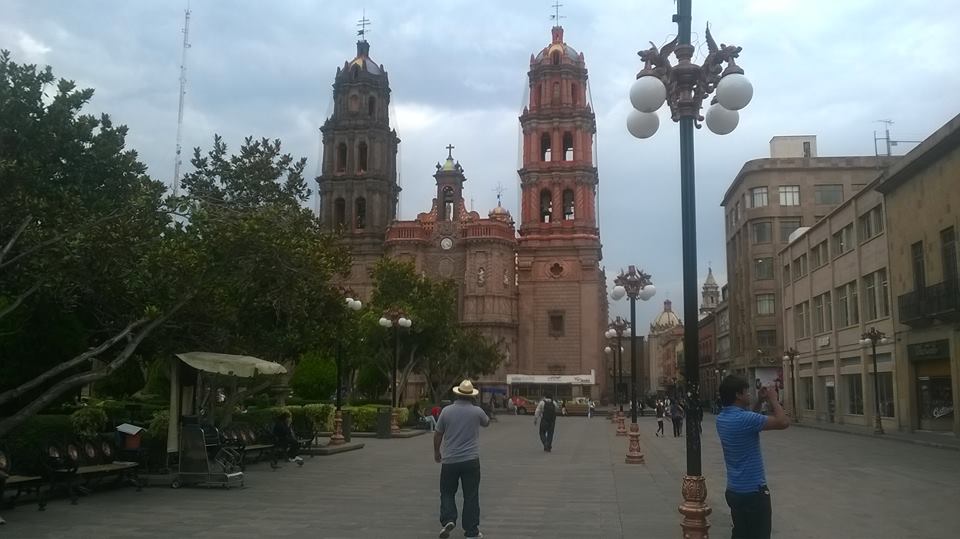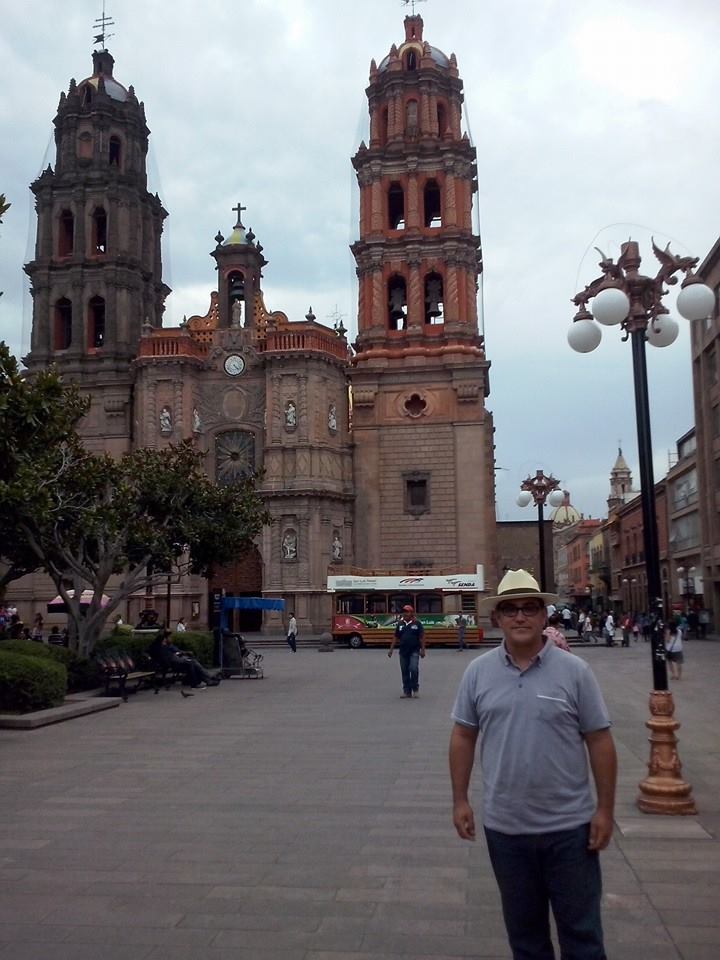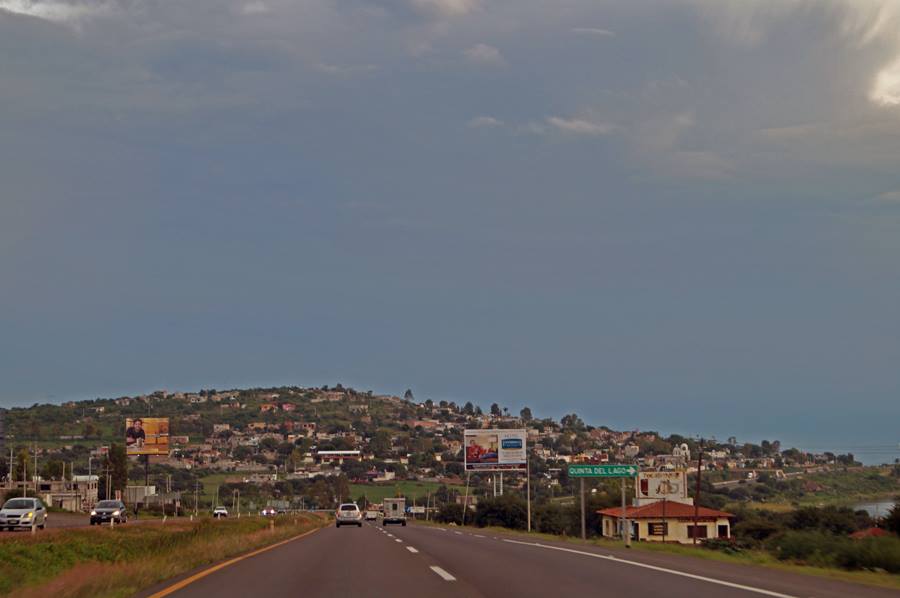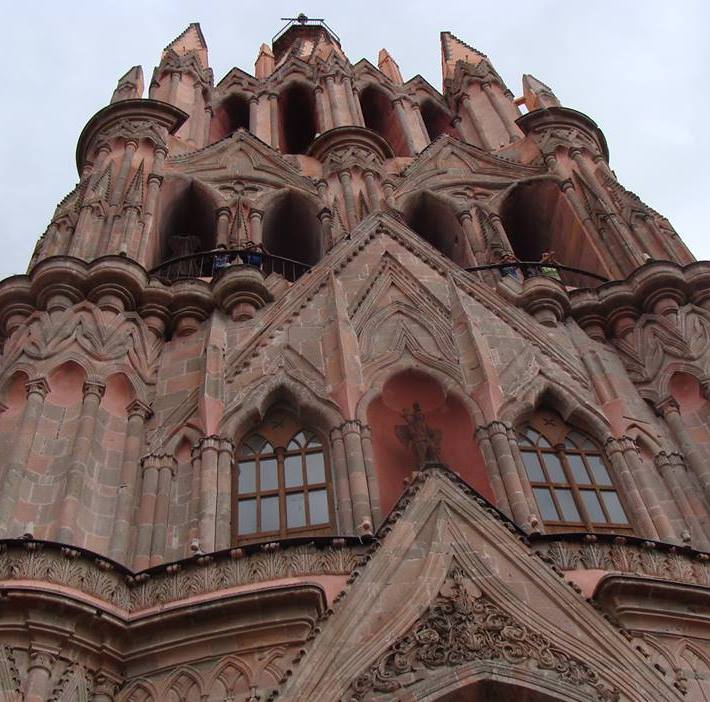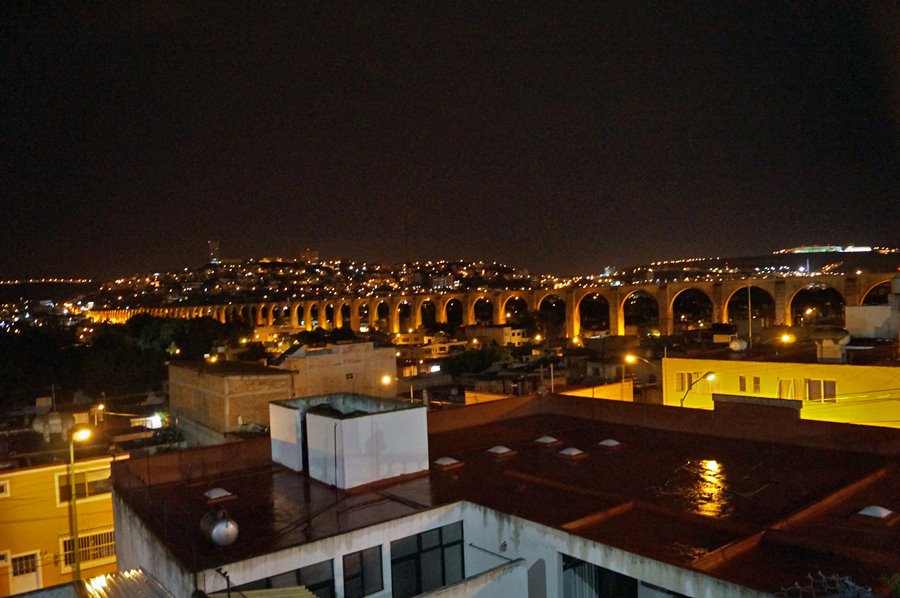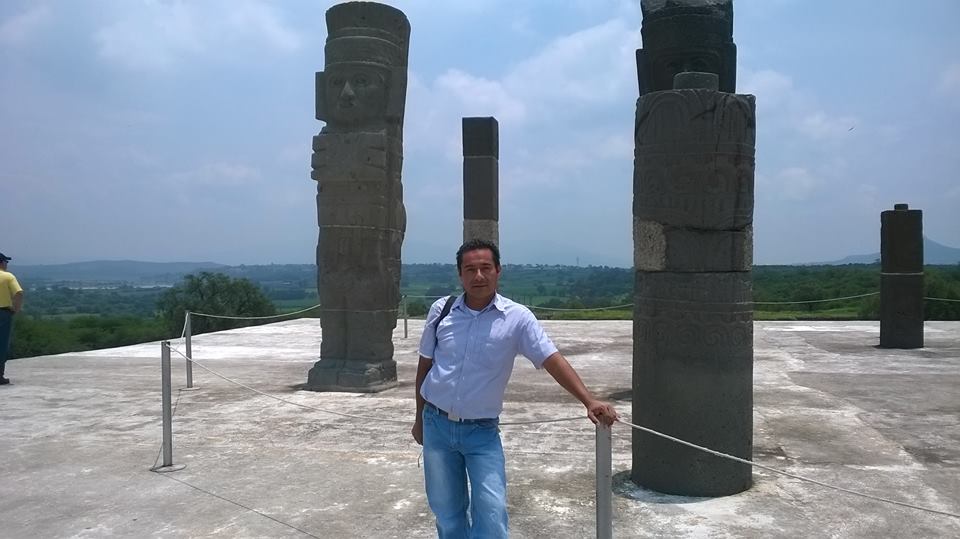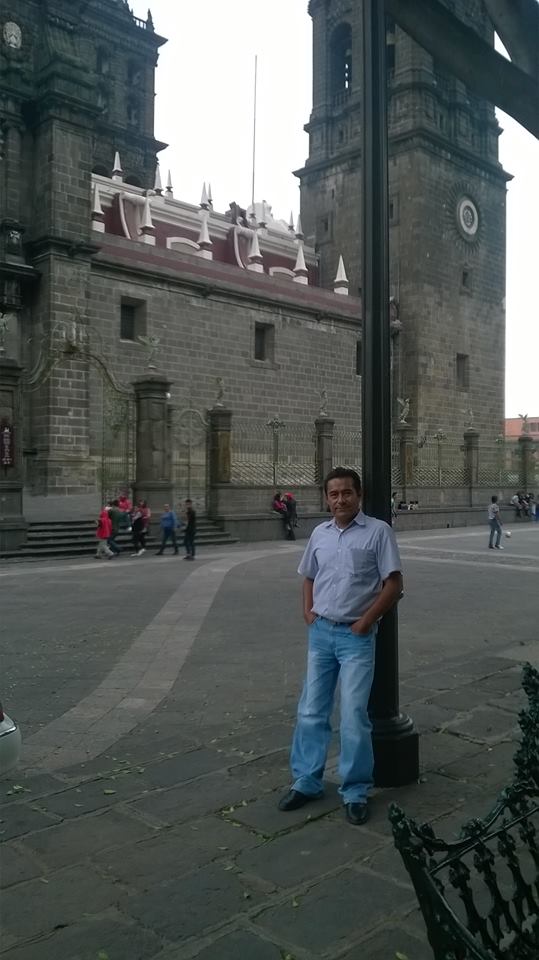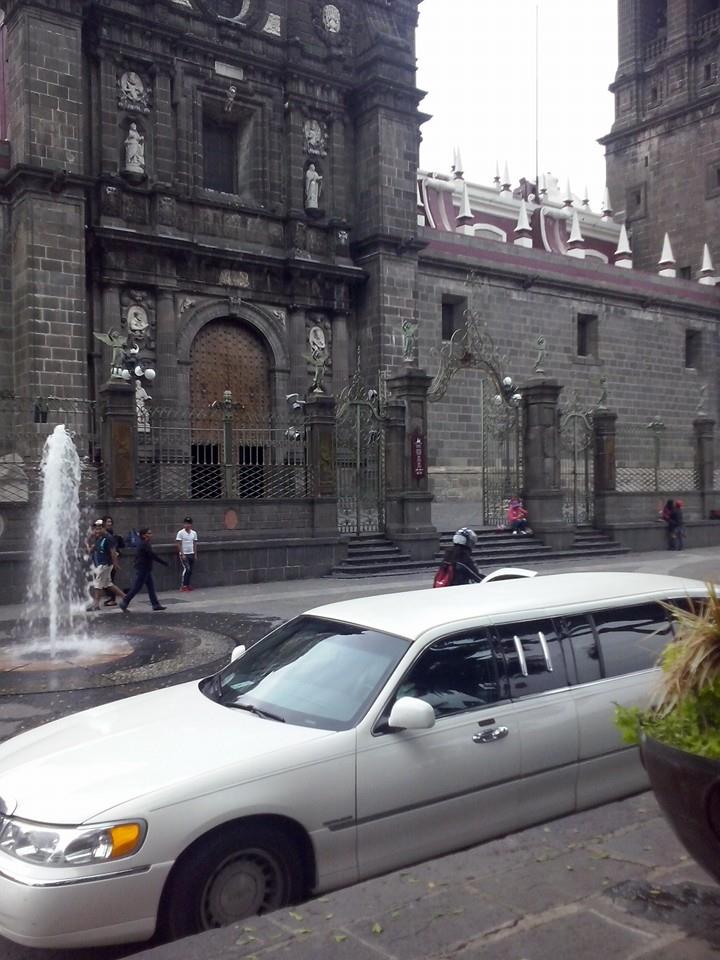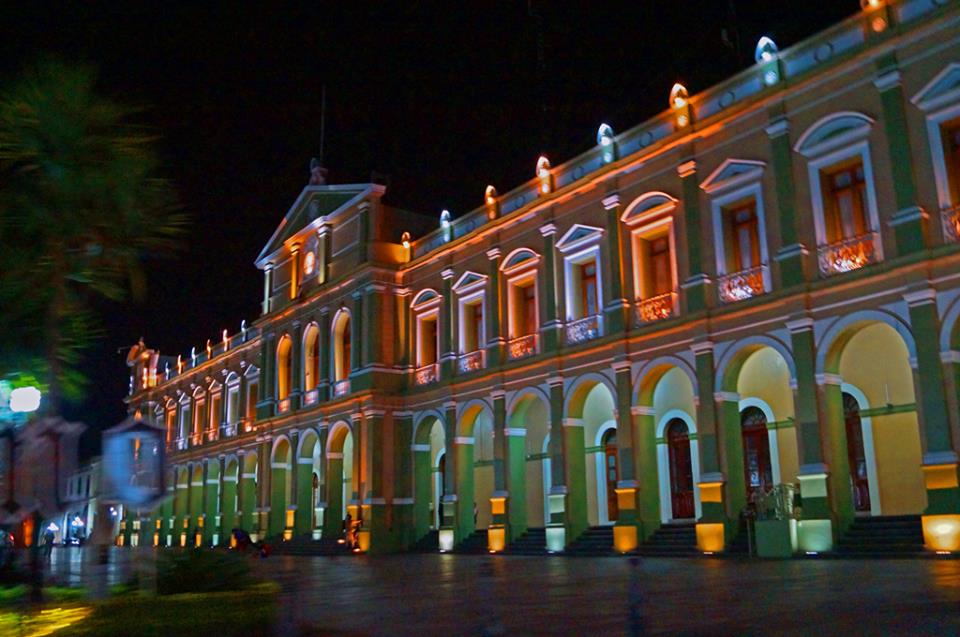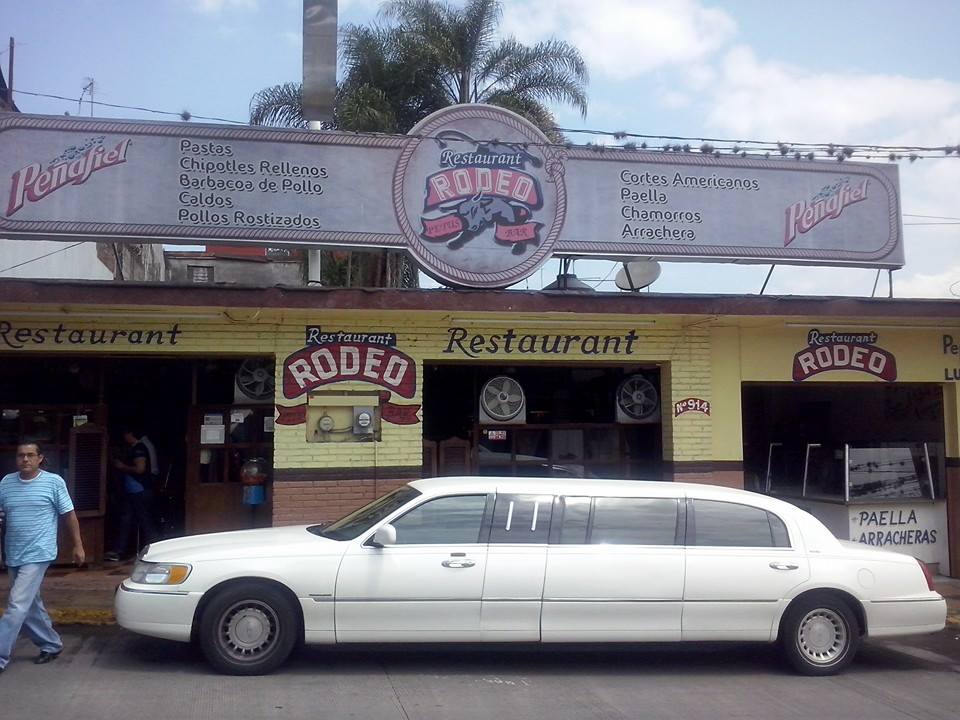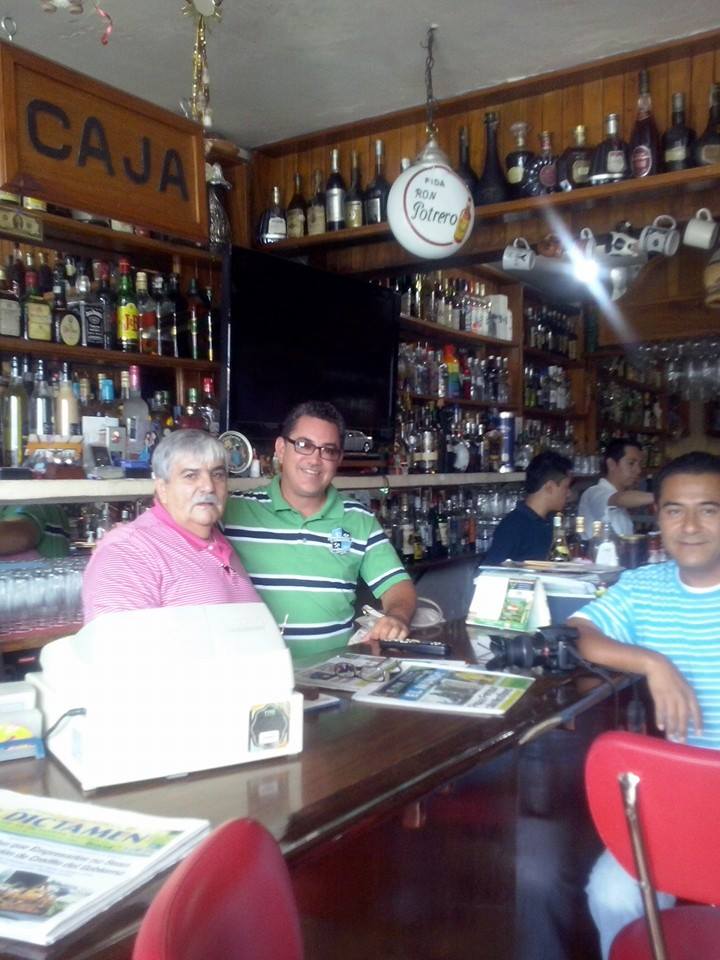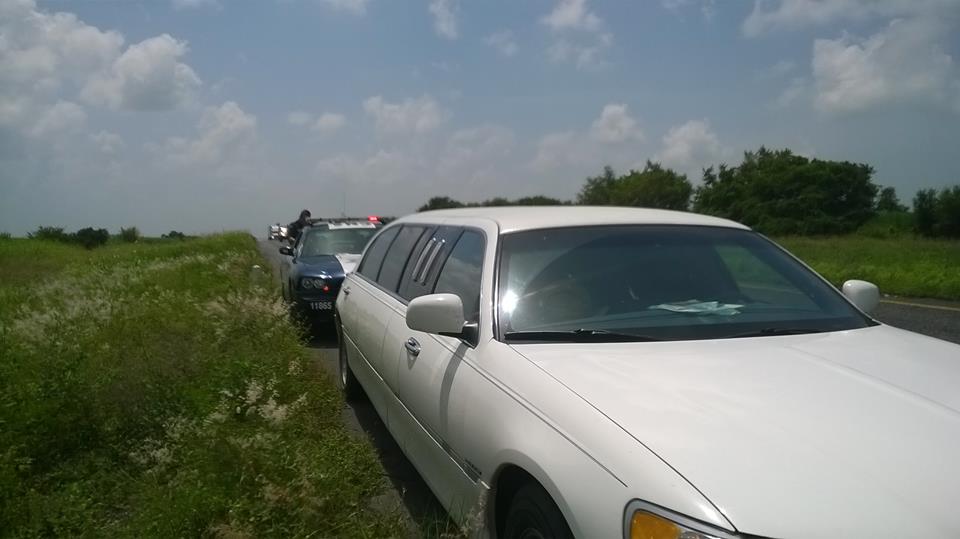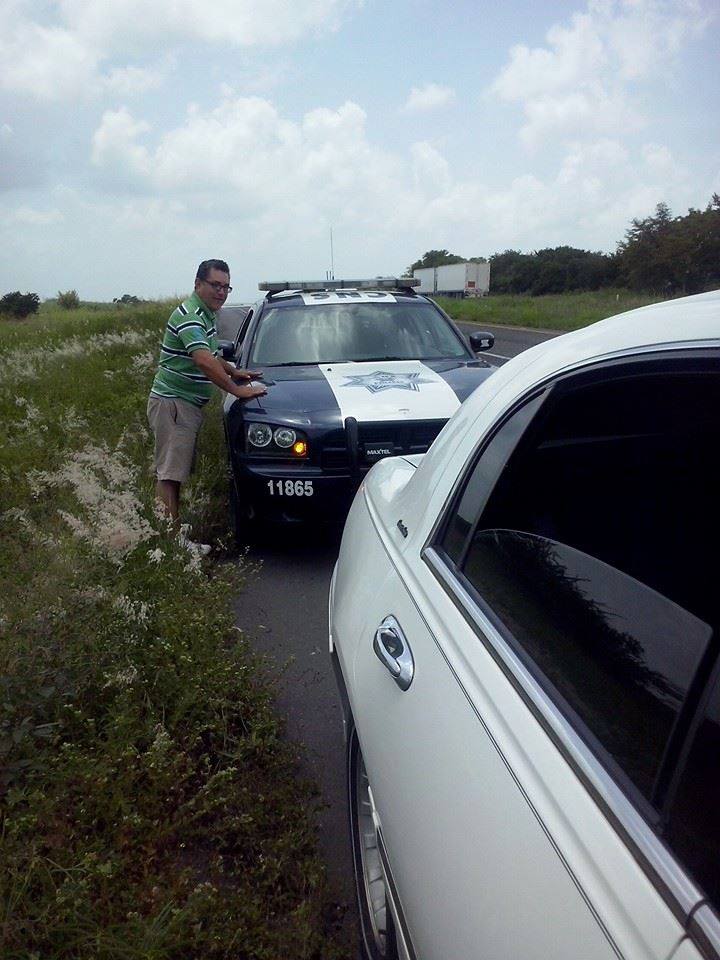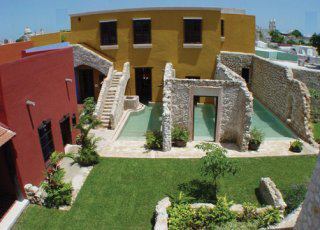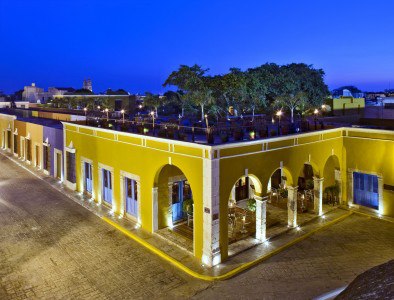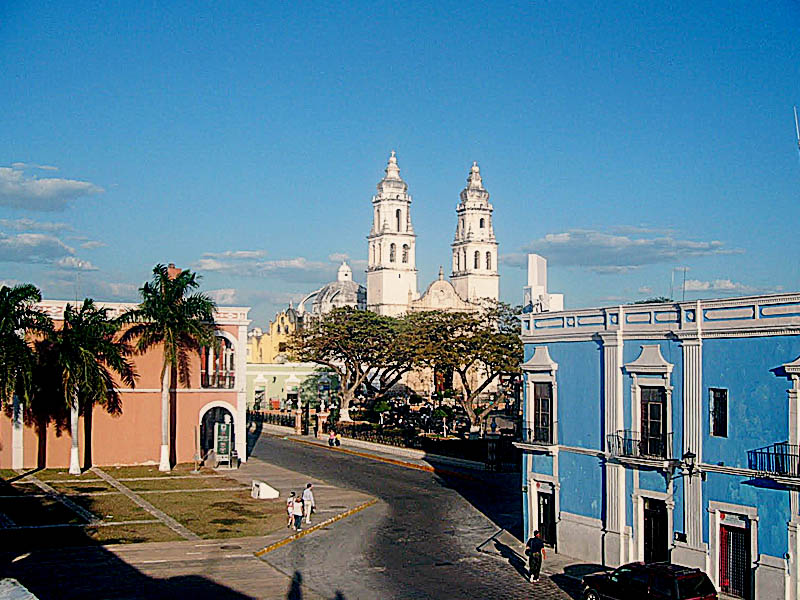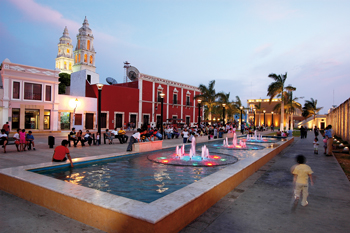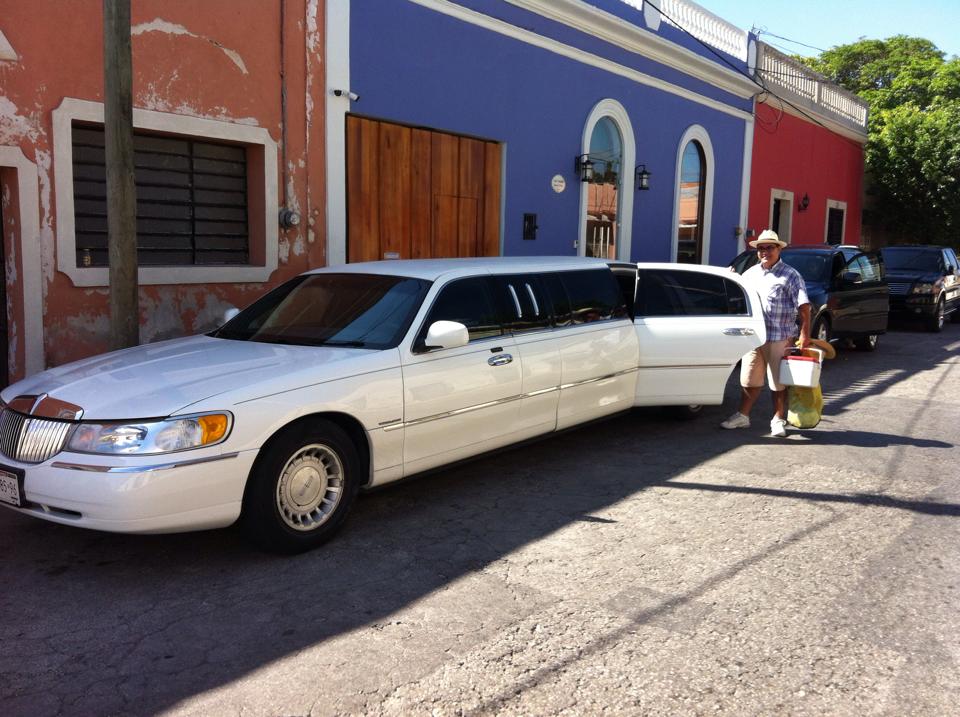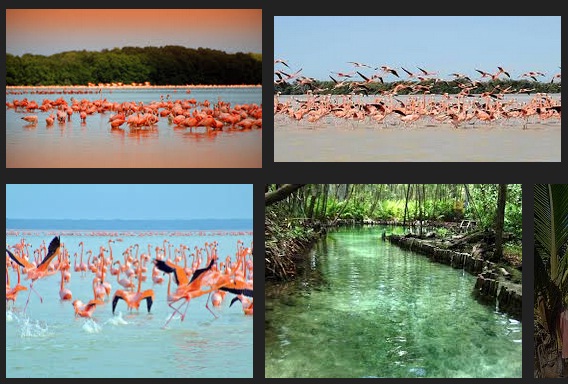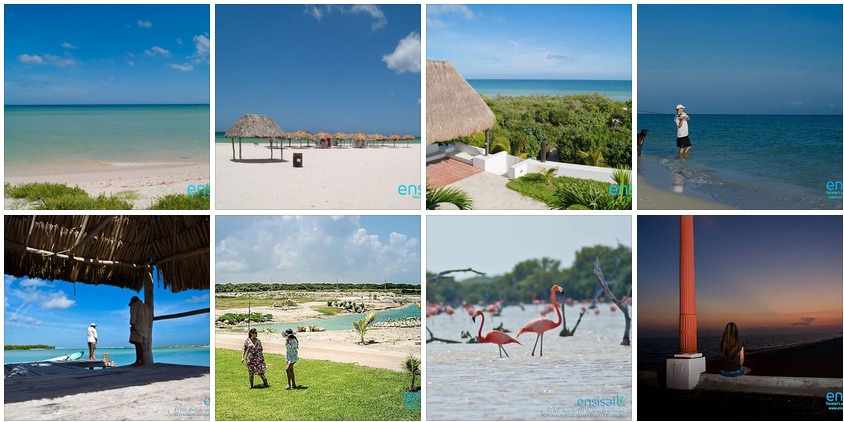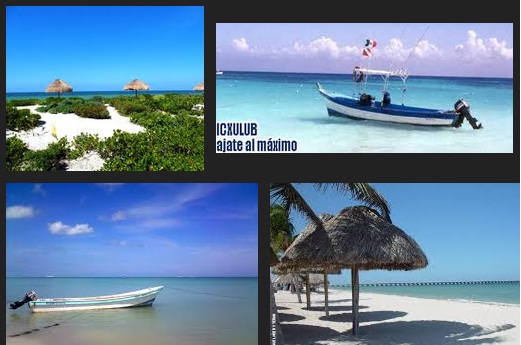This article was originally published on The Yucatan Times on October 15, 2014. It’s about a road trip from Gulfport, Mississippi to Mérida, Yucatán (passing through San Miguel de Allende). So check it out and learn why it is “The Ultimate Road Trip”.
Two friends, Alfonso and Raul, undertook a journey to help out a client for I Go Yucatan fly to Gulfport, Mississippi, pick up a vehicle, and drive it to Merida. Alfonso would fly to Gulfport by himself, pick up the vehicle, and drive it to Monterrey, Nuevo León, where he would meet his friend Raul. From there, the two would drive across Mexico to Merida. Join them now on their “Quest for the Yucatan“.
DAY ONE: Alfonso Galindo began the journey at the Merida International Airport where he boarded a 6 seat, Cessna 340 twin engine pressurized private plane bound for Gulfport Mississippi. A little more than two hours later, he was enjoying the view from the co-pilot’s seat as the aircraft touched down in Gulfport.
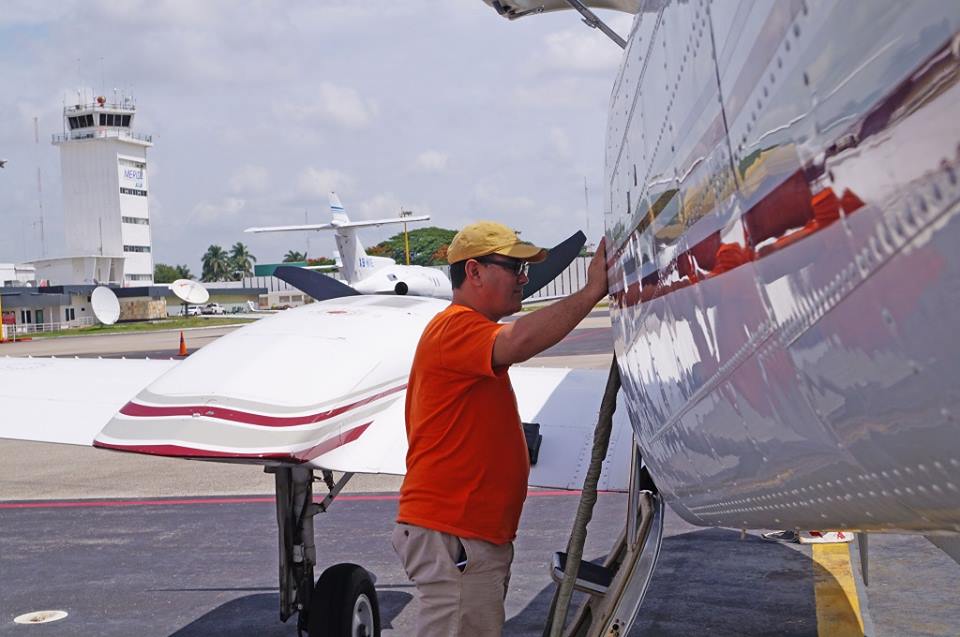
Alfonso Galindo boarding the 6 seat, Cessna bound for Gulfport Mississippi (Photo: Raul Ponce de Leon)
DAY TWO: Alfonso spent several days in Gulfport, where he experienced some of that special Southern hospitality, felt the breeze, tasted the food, and quenched his thirst with the nectars of the Bayou.
DAY THREE: 4th of July party at Biloxi Yatch Club
DAY FOUR: Today is the day to pick up the car, which, as it turns out, is no ordinary car, but a stretch limousine
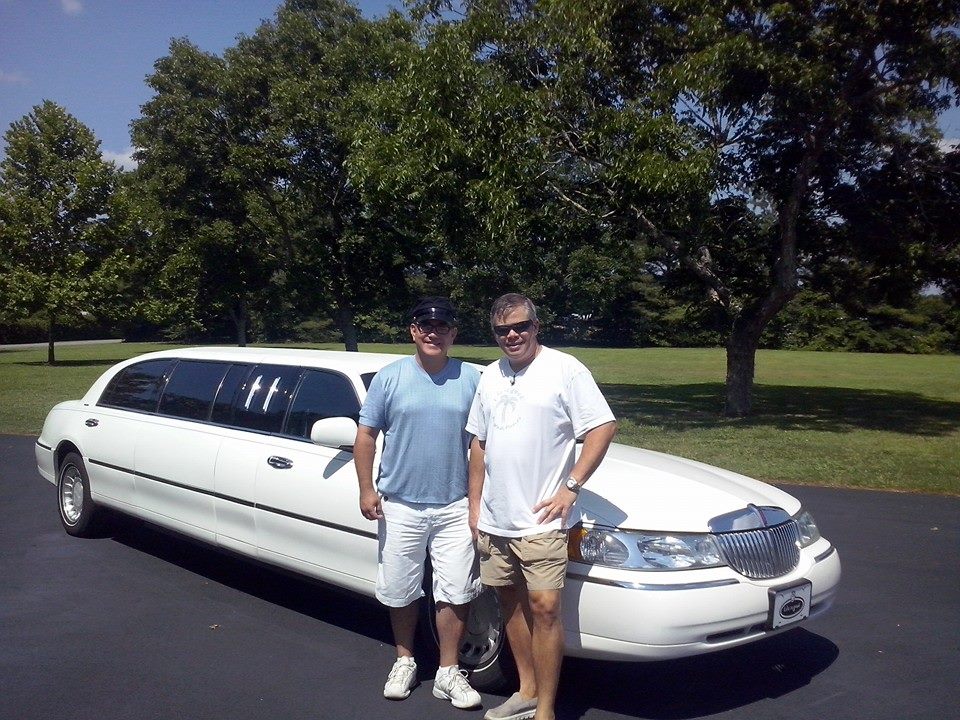
Alfonso is about to drive this limo all the way from Mississippi to Merida Yucatán (and beyond)… (Photo: Alfonso Galindo)
DAY FIVE: Alfonso left Gulfport on July 6th, and his first stop was New Orleans. He was hungry so he stopped to eat at a Cajun Style Restaurant on Bourbon Street.
Soon he was back on Interstate 10 heading West to Houston , Texas for good night rest at the Four Seasons, http://www.fourseasons.com/houston/ then off to San Antonio, Texas, for quick stop at the Alamo and some breakfast before turning south for the border city of Laredo.
As he approached Laredo, he could feel the Mexican way of life in the air, and in a matter of minutes, he was on the other side of the border, entering Mexico. The limo was already nationalized Mexican, no hassle at all.
90 minutes later, Alfonso arrived to Monterrey, Nuevo León, one of the most important cities in the country. He went straight to the airport to meet his buddy Raul, who had flown from Merida for this rendezvous.
Monterrey is a beautiful city, with tall buildings and lots of people in the downtown area. Raul lived in Monterrey for two years among cowboy hats, boots and arracheras in 1999, so he knew his way around. His favorite place to hit the hay was right across the main plaza, the Hotel Monterrey, https://www.hotelmonterreymacroplaza.com.mx/ where they actually had a parking space big enough to fit the limo.
DAY SIX: The pair enjoyed dinner with friends in one of the most peculiar places in town called El Castor, https://www.facebook.com/pages/El-Castor/147544405293476 a restaurant that looks like one of those dining places along Idaho on the I15 but covered in photographs of famous people from Mexico and the States that have dined there. The specialty of the house is meat in every imaginable style, and a bottle of wine and few local beers provided them with a good night’s sleep.
DAY SEVEN: The travelers were back on the road the following morning heading toward their next stop: San Luis Potosi.
They passed the city of Saltillo where they had breakfast of machaca con huevo and handmade 8 inch wide flour tortillas. As they drove through the desert, a rattlesnake crossed the well-maintained highway, barely avoiding getting crushed by the limo.
They arrived to San Luis Potosi on the 8th and decided to drive by the magnificent Carranza Avenue all the way to downtown San Luis, where majestic colonial buildings bring joy to the eye of the visitor. This city is the heart of the Plan of San Luis de Potosí, a political document published in 1910 that ushered in the Mexican revolution and the collapse of the dictatorship of Porfirio Díaz. The plan was written and published by Francisco I. Madero, a political opponent to Díaz who later became President of Mexico. Note limos don’t fit very easily in old colonial cities
From there, they headed towards San Miguel de Allende, and were surprised to find that it was only 90 minutes from San Luis. Once you leave San Luis and enter the state of Guanajuato , where the independence movement began, you are officially in Central Mexico, Aztec land, rich in history and culture since 600 BC.
San Miguel de Allende is home to Mexico’s largest concentration of Expats (both American and Canadian). It is a gorgeous town with a Gothic Style Cathedral right in the center.
Still a long way from home, they headed for Queretaro, and realized that it is a large city with a huge industrial zone, and with all the franchises and brands — from Costco, to Sam’s to Wal-Mart to McDonalds, Burger King and even Carl’s Jr.
Querétaro witnessed the signing of the Declaration of Independence of Mexico, which also has a gorgeous colonial downtown and the largest aqueduct in the country.
It had been a long day already, time to rest and look for a good place to eat and sleep. Hotel Hacienda Jurica, http://hacienda-jurica.hotel-rn.com/ is a fine hacienda that once belonged to the Viceroy of New Spain, Luis de Velasco in the 16th century.
DAY EIGHT: The next stop was the feared monster, the apocalyptic Mexico City. But since Raul is an experienced traveler and man born and raised in this monster, he led Alfonso around Mexico City and headed straight for Puebla, passing by the town of Tula, Hidalgo.
Tula Hidalgo is known worldwide for the “Atlantes” stone giants that are silent witnesses to the splendor of the Toltec Culture that flourished in that area around the year 700 B.C. They stopped briefly to pay their respects to the sacred Atlantes, and headed to Puebla around the state of Hidalgo, avoiding the asphalt jungle of Mexico City.
They were now officially in Southern Mexico. Like most cities in Mexico, its downtown area has stunning colonial architecture and a magnificent cathedral, which took 133 years to build (from 1557 to 1690).
DAY NINE: Puebla is also well known for its cuisine, based on a mixture of indigenous and Spanish flavors. Chiles en Nogada, Mole Poblano, Pipian and Mixotes are some of the best local dishes.
After Puebla, they climbed the winding roads of the Sierra Madre Oriental, where the Pico de Orizaba lives, the highest volcano in Mexico. They stopped at Cordova, in the mountains of Vera Cruz, to spend the night.
Here in Cordova Alfonso and Raul find an eccentric place to eat before they hit the deep road again. El Rodeo, owned by Petus and Becky, is a restaurant bar where you can have any kind of alcoholic drink, more than 1800 bottles to choose from almost every country around the world. Too bad Alfonso had to drive right after breakfast.
DAY TEN: In the morning of July 9th they were racing along the coast from Veracruz to Coatzacoalcos, heading towards Villahermosa at high speed, when they were stopped for speeding. The Federales (Federal Police) would not listen to any excuses, and gave them a ticket. The truth is that the federal police officer was very professional, and they even joked around with him. As in every not-good-been-pulled-over-by-cops situation they had to turn it into something positive. Alfonso started to ask questions important for a foreign tourist with foreign plates when pulled over on Mexico freeways:
1. The cops cannot keep any paper or documentation they request (license, registration insurance, etc.). They only need them to fill out their own forms and the ticket.
2. Once you have your ticket, you need to pay it at the SAT office closest to where you will be staying.
3. If you pay within 15 days, you will receive a 50% discount
4. If you think you can get out of paying the ticket because you have foreign plates, you are sadly mistaken. When the car reaches the border on your way out of Mexico, your ticket will show up, and you won’t be able to leave the country until you pay it.
5. And the “no comprendo español” won’t save you from getting a ticket.
So far the freeways had been excellent and safe, but right before entering Tabasco a long section of the freeway is under modernization resulting in long delays.
They passed by the oil wells of Ciudad del Carmen and stopped in Campeche to eat some of the World’s greatest seafood (and at an incredible price).
From Ciudad del Carmen to the capital city of Campeche, the freeway passes just a few meters from the seashore, making it one of the most pleasant roads to drive in Mexico. No matter what time of day you get here — dawn, noon or sunset, you will see jaw-dropping views.
Just a few minutes later they saw the sign: “Bienvenidos a Yucatán”
DAY ELEVEN: Finally, they reached their goal: the quest for the Yucatan had been achieved! It was just a matter of minutes before they could see the trees along Paseo de Montejo.
Finally, traveling expenses are an important matter to consider before planning a trip like this.
One of the reasons we decided to make this trip, was to dispel any myths regarding the safety of driving across Mexico. Therefore, to demonstrate that you can drive a vehicle, or in our case “a luxury stretch limousine”, without getting robbed, kidnapped, shot or extorted.
Millions of U.S. citizens safely visit Mexico each year for study, tourism, and business, including more than 150,000 who cross the border every day. The Mexican government dedicates substantial resources to protect visitors to major tourist destinations, and there is no evidence that Transnational Criminal Organizations (TCOs) have targeted U.S. visitors or residents based on their nationality.(http://www.mexicomike.com/safety/safety-UsStateDepartment.html).
· Since the limo rolled in to Mexico our travelers stayed in several hotels, with an average cost for a double room of about $100 USD per night.
· Meals for the two of them were $10 to $50 USD per day.
· Toll roads cost a total of $430 USD.
· Gasoline cost a total of $500 USD Red bulls, cokes, sometimes water, coffees, smokes, chips, about $100 USD.
Now you can plan your budget and experience the fantastic Quest for the Yucatan, the Ultimate Road Trip!
For any questions, comments, observations or inquiries regarding this Road Trip, please contact Mr Alfonso Galindo
Article orginally published on The Yucatan Times on October 15, 2014.


